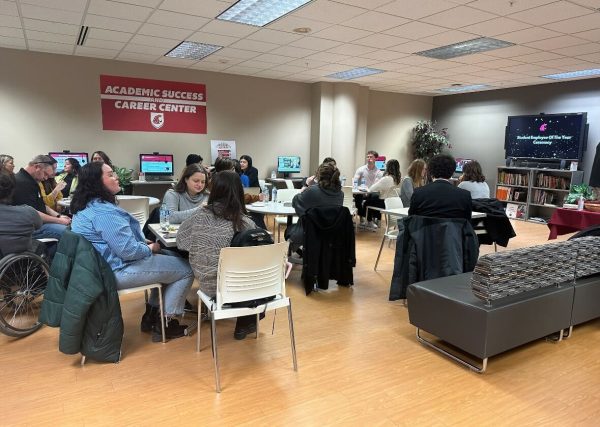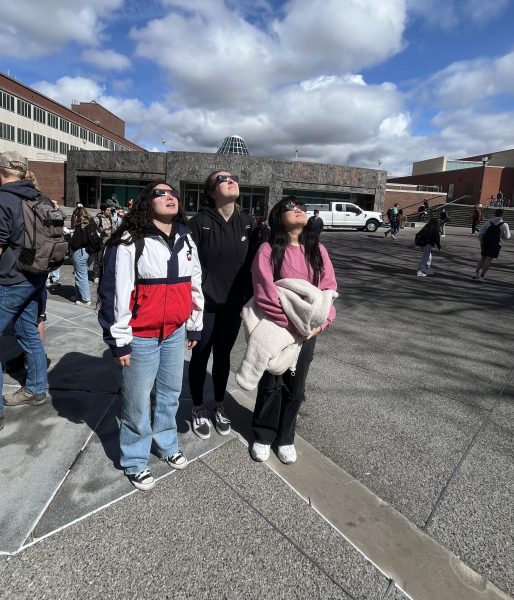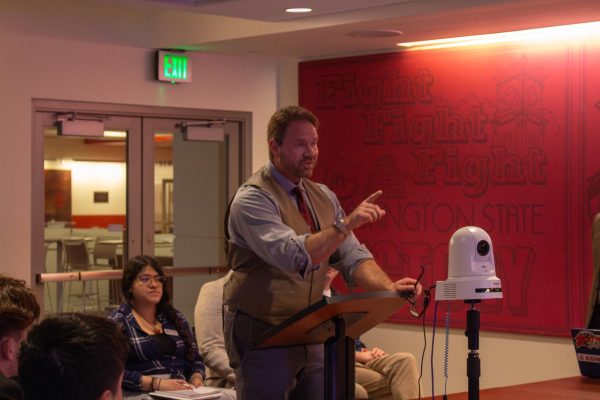A doorway to knowledge
October 14, 2013
The front door to WSU has opened, said Roger Patterson, vice president of WSU Finance and Administration.
Patterson and other university leaders spoke Saturday at the official dedication for the new Brelsford WSU Visitor Center. The new facility is located at 150 N.E. Spring St., near Reaney Park.
The Visitor Center provides information about WSU and other regional attractions to current and prospective students and their families, along with alumni and other visitors.
Outside the newest attraction to the Pullman campus, three 15-foot-tall concrete letters spell out W-S-U. A 40-foot-tall tower on the opposite end of the building lights up in the night as an artistic nod to Bryan Clock Tower.
WSU President Elson S. Floyd said the visitor center will become “a symbol for the present, past and future of WSU.”
Michael C. Worthy, vice chair of the WSU Board of Regents, said Duane and Terri Brelsford and their family made the building’s construction financially possible.
The Brelsfords, long-time members of the Pullman community, donated $1 million for the center, which cost around $2.2 million to build, Floyd said.
The university president extended thanks on behalf of WSU to Olson Kundig Architects, who designed the facility, and Sellen Construction, who contracted the building operation.
All of the wood-based materials used to construct the facility were developed using technology created by the WSU Composite Materials and Engineering Center.
The Visitor Center is seeking LEED (Leadership in Energy and Environmental Design) certification for the environmentally sustainable techniques used in its construction.
Floyd and others who spoke at the dedication ceremony reiterated that the center acts as a doorway to the university.
“But if you turn this way, it becomes the door to our community,” Duane Brelsford said as he turned to face west along Main Street.
Pullman Mayor Glenn Johnson also thanked the Brelsfords for their contribution to the ongoing development of the community.
“You know, when our family first moved here in 1979, this was basically the pizza corner,” Johnson said, referring to the corner where the visitor center now stands.
He joked that Pullman once had the most pizza restaurants per capita in any U.S. city.
“Fortunately today we’re known for much more than that,” he said. “Every time you drive by and see those big letters out front: This is WSU, and Go Cougs!”





















